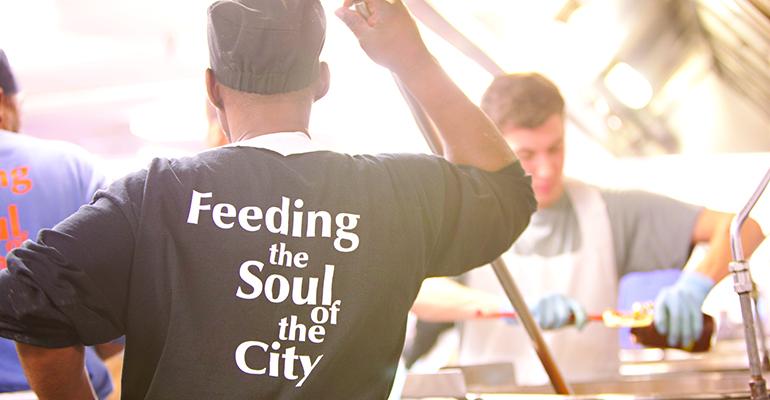When teens and young adults aren’t enrolled in school or the workforce they often have limited options. But a new program is designed to prepare these at-risk youths for jobs and careers in the restaurant industry.
Sixteen-to-24-year-olds are the targeted participants of Restaurant Ready, a new program by the National Restaurant Association Educational Foundation (NRAEF). The program aims to prepare participants for work and gives them the support they need once they enter the workforce.
“One in three young people get their first job in restaurants,” NRAEF Executive Vice President Rob Gifford told Nation’s Restaurant News, “at the same time that there was a societal problem with young people who are no longer in the educational system.”
In collaboration with community-based organizations that work with at-risk youth, the NRAEF is beginning the larger rollout of the program. Restaurant Ready is currently in its pilot stages in five cities across the country in Louisiana, Texas, California, Colorado and Washington D.C.
Additional support systems are needed for participants — more than the average high school student.
“They may need counseling, they may need help with transportation, they may need legal or other assistance, and community-based organizations are well equipped to provide that,” said Gifford.
 The NRAEF uses a list of 6 “restaurant-ready” competencies that were compiled in collaboration with restaurant industry leaders as a guide for the skills the participants should learn before leaving the program. They range from coming to work on time and prepared for work to working as part of a team to responding appropriately to positive and negative feedback, and are used at each of the community-based organizations working in collaboration with the NRAEF.
The NRAEF uses a list of 6 “restaurant-ready” competencies that were compiled in collaboration with restaurant industry leaders as a guide for the skills the participants should learn before leaving the program. They range from coming to work on time and prepared for work to working as part of a team to responding appropriately to positive and negative feedback, and are used at each of the community-based organizations working in collaboration with the NRAEF.
Additionally, there is an assessment rubric that includes a checklist of certification requirements, such as a self-assessment, role playing and scenarios, and an observation of the participant in order to ensure that they are at a competency level comparable to others entering the workforce.
 Despite all of the assessments, the NRAEF does not force any of the community-based organizations to conform to their style of teaching. On the contrary, Gifford believes the program is successful because each organization has a different style of teaching, an important part of the shared network of communication among all participants.
Despite all of the assessments, the NRAEF does not force any of the community-based organizations to conform to their style of teaching. On the contrary, Gifford believes the program is successful because each organization has a different style of teaching, an important part of the shared network of communication among all participants.
This “knowledge-sharing network” is an essential part of the program and its growth. Each city can share their success and failures with each other and the NRAEF to improve the program country-wide both in the moment and in preparation for the future.
“The problem that we had faced was that many employers were interested in hiring from this demographic, but didn’t know how,” said Gifford.
Not only did the employers face problems finding young employees but the community-based organizations had problems in cultivating relationships; this is where the NRAEF knew its expertise would help.
The NRAEF has relationships with restaurants through its main organization, but also has extensive relationships with the industry associations in each state in the United States.
However, it isn’t as simple as connecting with employers. There is also the hurdle of ensuring that employers know how to support these participants.
Part of the program is continued assistance once a participant completes the course and enters the workforce and the NRAEF only partners with community-based organizations that provide “ongoing check-ins, support and interaction once [the participants] leave this place,” according to Gifford.
This is part of Teen Vision, a special report about how this generation works, eats and plays.
Contact Holly Petre at [email protected]





